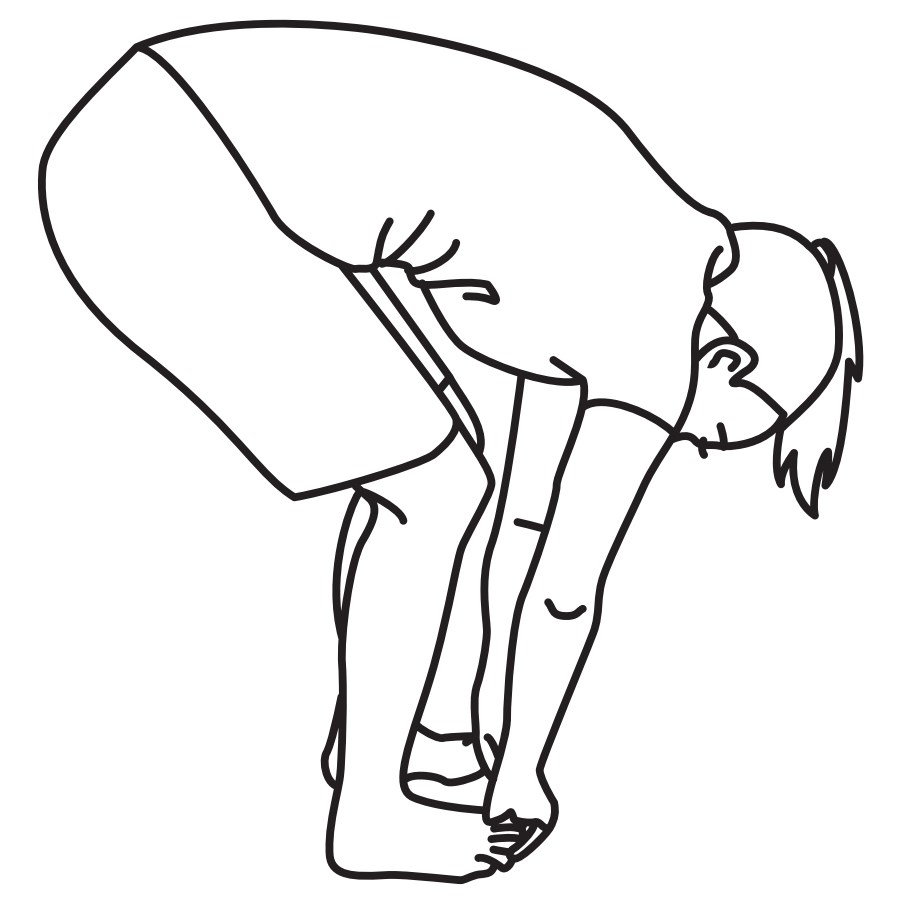Objectives
Materials
Key Questions
-
What makes humans topple over?
-
Why do people have different centres of gravity?
-
Part 1:
- Why can you jump backward but not forward?
- How does your weight shift when you jump?
-
Part 2:
- What part of your body is your base while you are sitting down?
- What does your body have to be able to do in order to stand up? Why?
-
Part 3:
- Why can’t you pick up the money without moving your feet or bending your knees?
- What does your body have to be able to do in order to pick up the money? Why?
-
Part 4:
- Why can’t you move your left foot off the floor?
- What does your body have to be able to do in order to pick up your left foot? Why?
-
Part 5:
- What part of your body is your base while you are kneeling?
- Where is an elementary student’s centre of gravity?
- What happens to the centre of gravity when boys get older? When girls get older?
- Why will an adult man not usually be able to succeed in this activity?
What To Do
General Procedure:
- Invite a different volunteer to come to the front of the class to demonstrate each part.
- After each demonstration, invite the students to try it for themselves.
Part 1: The Impossible Leap
- While standing, bend over and hold your toes with your hands, keeping your knees slightly bent.

- Jump forward in this position while holding your toes.
- Try jumping backwards.
While bent over and holding on to your toes, you can jump backwards from one end of the room to the other, but you won’t be able to do a single jump forward. When we jump, we first shift our centre of gravity in the direction we want to jump, and then we move our support base (i.e. our feet) in the same direction to regain our balance. When you are holding onto your toes, jumping backwards is not a problem because you can use your heels to shift your weight. But to jump forward, you would have to use your toes. Unfortunately, your fingers are in the way.
Part 2: The Super Glue Chair
- Sit in a straight-back armless chair, keeping your back against the back of the chair and your feet flat on the floor.
- Fold your arms across your chest.
- Keeping your feet flat and your back straight, stand up.
While sitting in a chair with your back against the chair and your feet on the floor, your centre of gravity is at your waist, supported by the chair. When you try to stand up with your back straight, you prevent the centre of gravity from moving to a position above your feet (your support base), as you would need to, to stand up. So you remain glued to your chair!
Part 3: Pick-Up Trick
- Place an object on the floor about 50 cm from a wall. Paper money works well. Tell the students they can keep the $10 bill if they succeed at this challenge (Hint: they cannot).
- Stand with your back against the wall, feet together and heels against the wall.
- Try to pick up the object on the floor without moving your feet or bending your knees.
When you stand straight against the wall, your centre of gravity is over your feet. When you bend forward, your centre of gravity shifts forward. In order to keep your balance, you must move your feet forward or your bum backwards. This would ensure that your centre of gravity is right above your feet to maintain stability. Since the rules of this challenge do not allow you to move your feet and the wall is behind you, there is no way to shift your centre of gravity to maintain balance while trying to pick up the money. If you insist on picking up the object, you will fall flat on your face.
Part 4: Leg Lift
- Stand against a wall with your right side facing the wall, then put your right foot and cheek against the wall (you may need to move your right arm backwards).
- Lift your left foot off the floor.
In order to move your left leg while your right side is against a wall, you need to shift your centre of gravity over your right foot. You cannot do this without moving the wall.
Part 5: Smartie Sniffer
- Pair up the students and give them each a Smartie.
- Partner 1: Kneel on the floor with your knees together. Crouch down with your arms in front of your knees, elbows snug against your kneecaps.
- Partner 2: Place the Smartie at the tip of your partner’s outstretched fingers.
- Partner 1: Once the Smartie is in place, straighten up so that you are kneeling upright. With your arms behind your back, lean forward to touch your nose to the Smartie.
- Swap roles with your partner.

This exercise can be used to determine the approximate location of your centre of gravity. If you could not touch the Smartie (candy) without falling over, your centre of gravity is high (above your belly button). When your centre of gravity is high, it will surpass your base (between the knees and toes) when you lean over. If you succeeded in touching the Smartie, it means that you have a low centre of gravity. Even when you lean over, your centre of gravity is still above your base.
Extensions
-
Ask an adult male to demonstrate the "Smartie Sniffer" to illustrate the results of a higher centre of gravity.
-
Draw the person in each part and show their centre of gravity and base of support.


